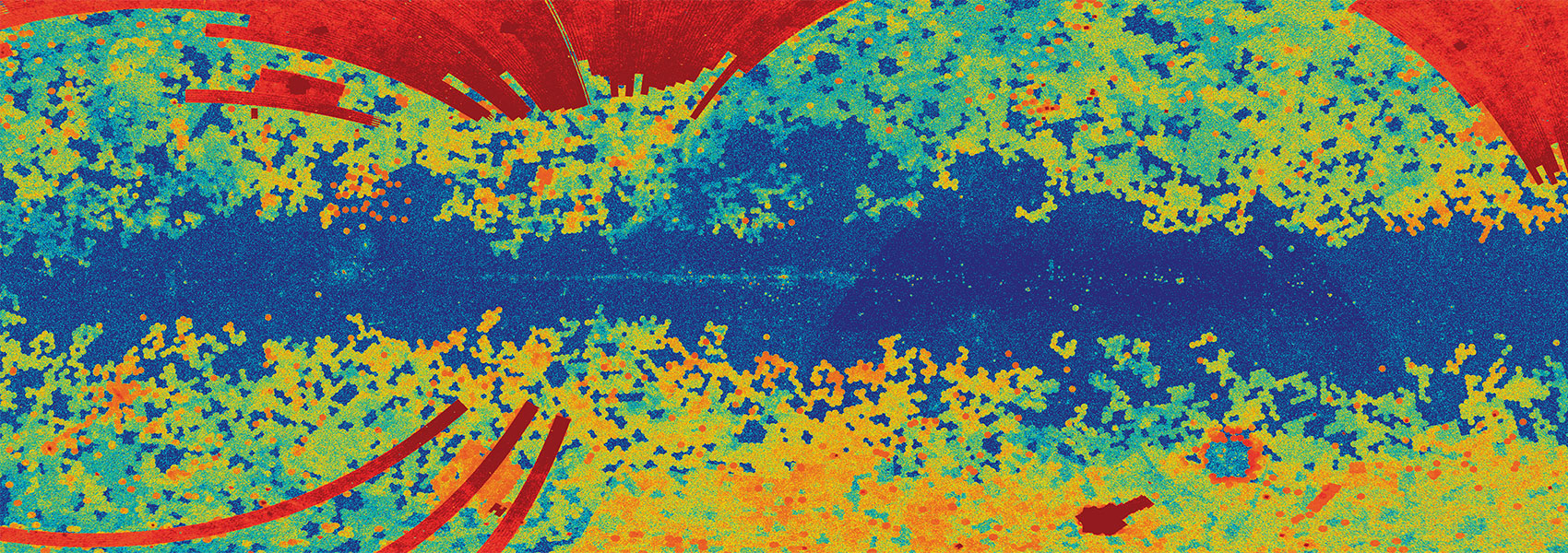February
2013
•
2013A&A...550A.134P
Authors
•
Planck Collaboration
•
Ade, P. A. R.
•
Aghanim, N.
•
Arnaud, M.
•
Ashdown, M.
•
Atrio-Barandela, F.
•
Aumont, J.
•
Baccigalupi, C.
•
Balbi, A.
•
Banday, A. J.
•
Barreiro, R. B.
•
Battaner, J. G. Bartlett E.
•
Benabed, K.
•
Benoît, A.
•
Bernard, J. -P.
•
Bersanelli, M.
•
Bhatia, R.
•
Bikmaev, I.
•
Böhringer, H.
•
Bonaldi, A.
•
Bond, J. R.
•
Borrill, J.
•
Bouchet, F. R.
•
Bourdin, H.
•
Burenin, R.
•
Burigana, C.
•
Cabella, P.
•
Cardoso, J. -F.
•
Castex, G.
•
Catalano, A.
•
Cayón, L.
•
Chamballu, A.
•
Chary, R. -R.
•
Chiang, L. -Y.
•
Chon, G.
•
Christensen, P. R.
•
Clements, D. L.
•
Colafrancesco, S.
•
Colombo, L. P. L.
•
Comis, B.
•
Coulais, A.
•
Crill, B. P.
•
Cuttaia, F.
•
Danese, L.
•
Davis, R. J.
•
de Bernardis, P.
•
de Gasperis, G.
•
de Zotti, G.
•
Delabrouille, J.
•
Démoclès, J.
•
Désert, F. -X.
•
Diego, J. M.
•
Dolag, K.
•
Dole, H.
•
Donzelli, S.
•
Doré, O.
•
Dörl, U.
•
Douspis, M.
•
Dupac, X.
•
Efstathiou, G.
•
Enßlin, T. A.
•
Eriksen, H. K.
•
Finelli, F.
•
Flores-Cacho, I.
•
Forni, O.
•
Frailis, M.
•
Franceschi, E.
•
Frommert, M.
•
Ganga, K.
•
Génova-Santos, T.
•
Giard, M.
•
Gilfanov, M.
•
Giraud-Héraud, Y.
•
González-Nuevo, J.
•
Górski, K. M.
•
Gregorio, A.
•
Gruppuso, A.
•
Hansen, F. K.
•
Harrison, D.
•
Hempel, A.
•
Henrot-Versillé, S.
•
Hernández-Monteagudo, C.
•
Herranz, D.
•
Hildebrandt, S. R.
•
Hivon, E.
•
Hobson, M.
•
Holmes, W. A.
•
Hovest, W.
•
Hurier, G.
•
Jaffe, T. R.
•
Jaffe, A. H.
•
Jagemann, T.
•
Jones, W. C.
•
Juvela, M.
•
Khamitov, I.
•
Kisner, T. S.
•
Kneissl, R.
•
Knoche, J.
•
Knox, L.
•
Kunz, M.
•
Kurki-Suonio, H.
•
Lagache, G.
•
Lamarre, J. -M.
•
Lasenby, A.
•
Lawrence, C. R.
•
Le Jeune, M.
•
Leonardi, R.
•
Lilje, P. B.
•
Linden-Vørnle, M.
•
López-Caniego, M.
•
Lubin, P. M.
•
Luzzi, G.
•
Macías-Pérez, J. F.
•
Maffei, B.
•
Maino, D.
•
Mandolesi, N.
•
Maris, M.
•
Marleau, F.
•
Marshall, D. J.
•
Martínez-González, E.
•
Masi, S.
•
Massardi, M.
•
Matarrese, S.
•
Matthai, F.
•
Mazzotta, P.
•
Mei, S.
•
Melchiorri, A.
•
Melin, J. -B.
•
Mendes, L.
•
Mennella, A.
•
Mitra, S.
•
Miville-Deschènes, M. -A.
•
Moneti, A.
•
Montier, L.
•
Morgante, G.
•
Munshi, D.
•
Murphy, J. A.
•
Naselsky, P.
•
Nati, F.
•
Natoli, P.
•
Nørgaard-Nielsen, H. U.
•
Noviello, F.
•
Novikov, D.
•
Novikov, I.
•
Osborne, S.
•
Pajot, F.
•
Paoletti, D.
•
Pasian, F.
•
Patanchon, G.
•
Perdereau, O.
•
Perotto, L.
•
Perrotta, F.
•
Piacentini, F.
•
Piat, M.
•
Pierpaoli, E.
•
Piffaretti, R.
•
Plaszczynski, S.
•
Pointecouteau, E.
•
Polenta, G.
•
Ponthieu, N.
•
Popa, L.
•
Poutanen, T.
•
Pratt, G. W.
•
Prunet, S.
•
Puget, J. -L.
•
Rachen, J. P.
•
Rebolo, R.
•
Reinecke, M.
•
Remazeilles, M.
•
Renault, C.
•
Ricciardi, S.
•
Riller, T.
•
Ristorcelli, I.
•
Rocha, G.
•
Roman, M.
•
Rosset, C.
•
Rossetti, M.
•
Rubiño-Martín, J. A.
•
Rusholme, B.
•
Sandri, M.
•
Savini, G.
•
Schaefer, B. M.
•
Scott, D.
•
Smoot, G. F.
•
Starck, J. -L.
•
Sudiwala, R.
•
Sunyaev, R.
•
Sutton, D.
•
Suur-Uski, A. -S.
•
Sygnet, J. -F.
•
Tauber, J. A.
•
Terenzi, L.
•
Toffolatti, L.
•
Tomasi, M.
•
Tristram, M.
•
Tucci, M.
•
Valenziano, L.
•
Van Tent, B.
•
Vielva, P.
•
Villa, F.
•
Vittorio, N.
•
Wade, L. A.
•
Wandelt, B. D.
•
Welikala, N.
•
White, S. D. M.
•
Yvon, D.
•
Zacchei, A.
•
Zonca, A.
Abstract
•
Context. About half of the baryons of the Universe are expected to be in the form of filaments of hot and low-density intergalactic medium. Most of these baryons remain undetected even by the most advanced X-ray observatories, which are limited in sensitivity to the diffuse low-density medium.
Aims: The Planck satellite has provided hundreds of detections of the hot gas in clusters of galaxies via the thermal Sunyaev-Zel'dovich (tSZ) effect and is an ideal instrument for studying extended low-density media through the tSZ effect. In this paper we use the Planck data to search for signatures of a fraction of these missing baryons between pairs of galaxy clusters.
Methods: Cluster pairs are good candidates for searching for the hotter and denser phase of the intergalactic medium (which is more easily observed through the SZ effect). Using an X-ray catalogue of clusters and the Planck data, we selected physical pairs of clusters as candidates. Using the Planck data, we constructed a local map of the tSZ effect centred on each pair of galaxy clusters. ROSAT data were used to construct X-ray maps of these pairs. After modelling and subtracting the tSZ effect and X-ray emission for each cluster in the pair, we studied the residuals on both the SZ and X-ray maps.
Results: For the merging cluster pair A399-A401 we observe a significant tSZ effect signal in the intercluster region beyond the virial radii of the clusters. A joint X-ray SZ analysis allows us to constrain the temperature and density of this intercluster medium. We obtain a temperature of kT = 7.1 ± 0.9 keV (consistent with previous estimates) and a baryon density of (3.7 ± 0.2) × 10-4 cm-3.
Conclusions: The Planck satellite mission has provided the first SZ detection of the hot and diffuse intercluster gas.
Links



